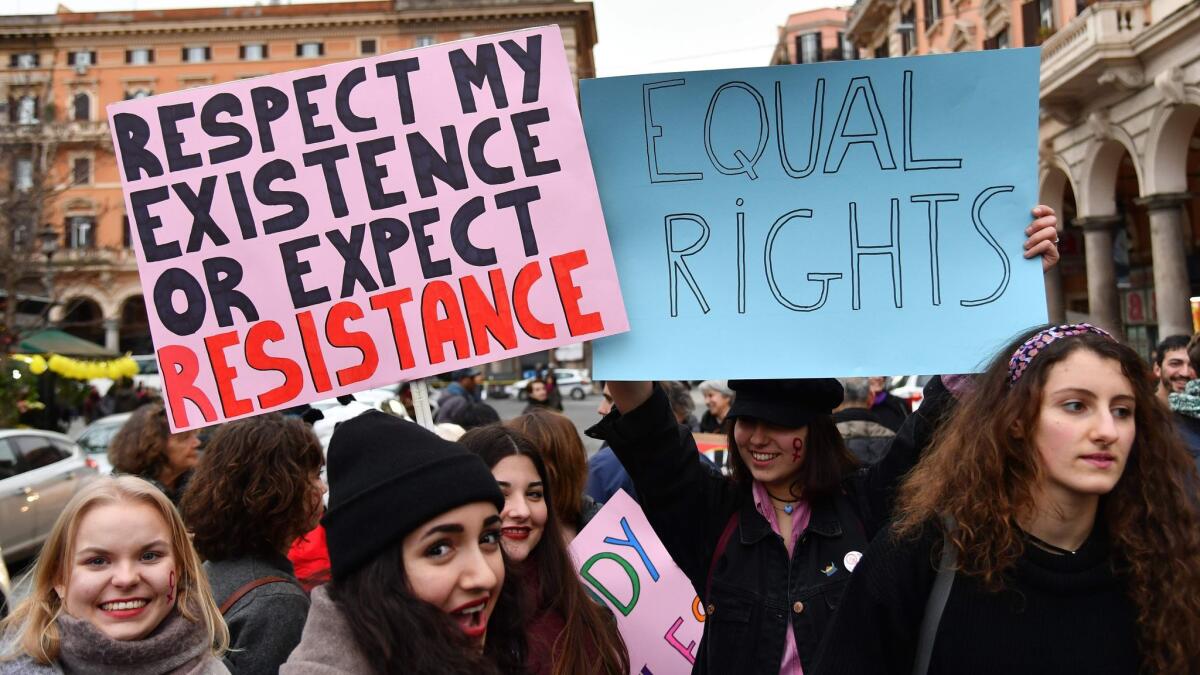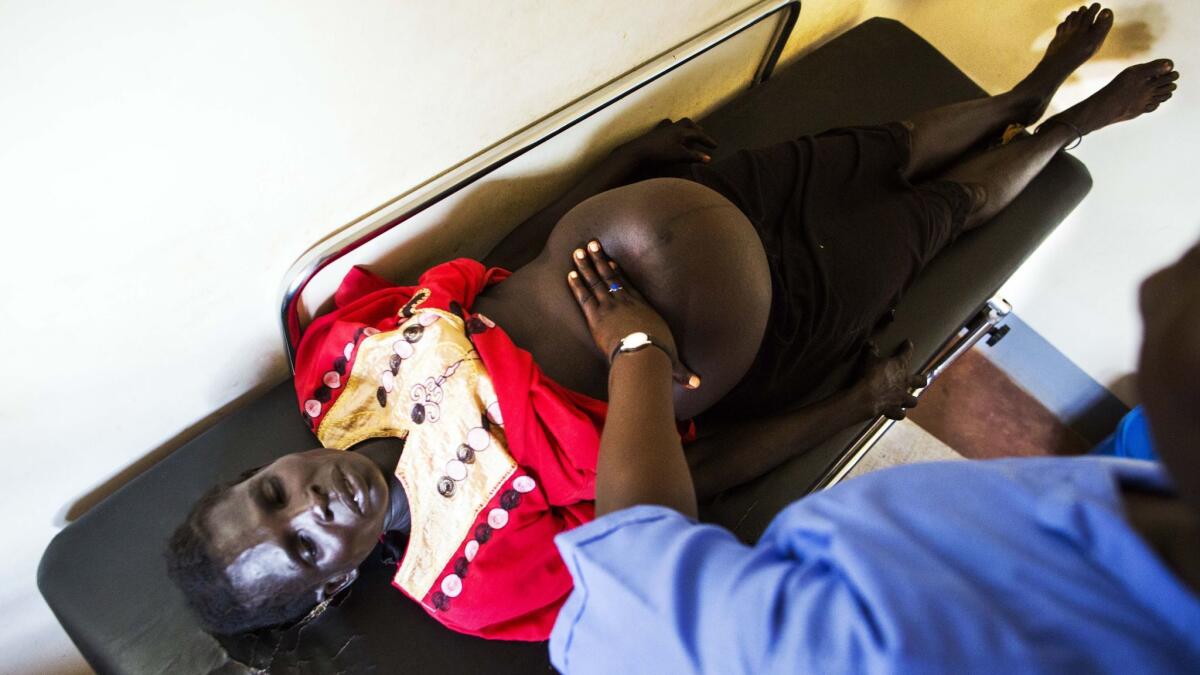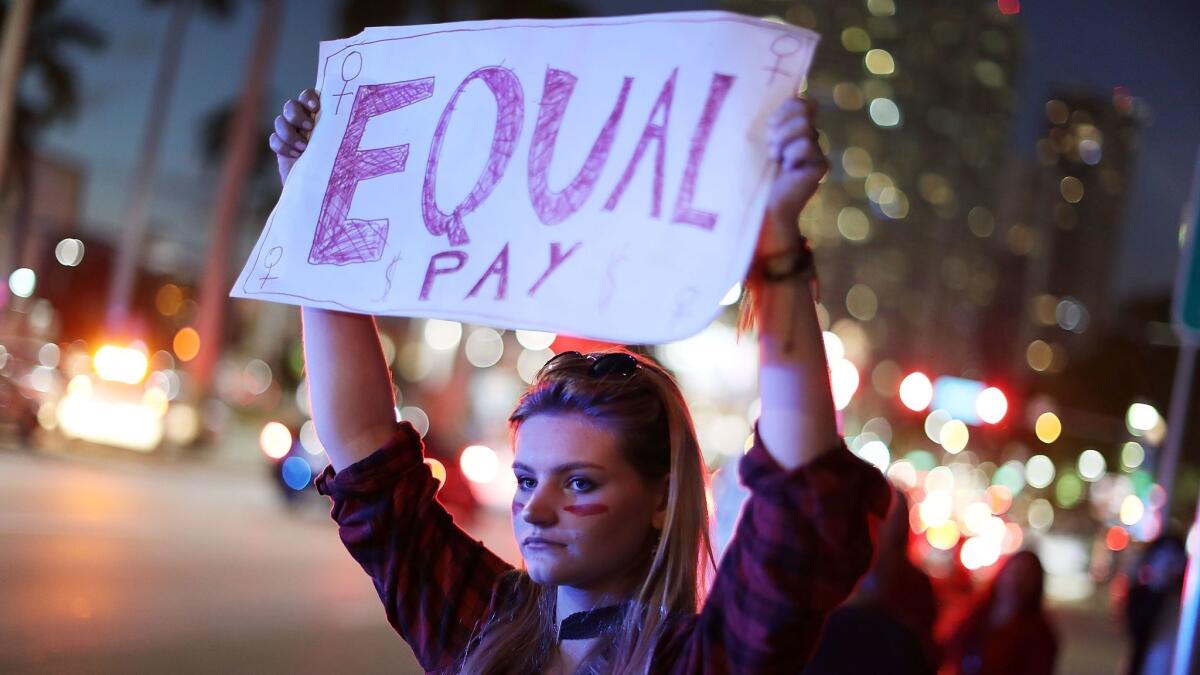International Women’s Day by the numbers

- Share via
With the campaign theme #PressforProgress, International Women’s Day — which is Thursday — comes amid a renewed push for female empowerment.
In the United States, the #MeToo and #TimesUp movements have spurred women to speak out against sexual assault and harassment.
The movements were launched last year in response to revelations that some of Hollywood’s most powerful men were serial abusers of women. The protests have rippled across other fields, including the media.
Women lag behind men on many fronts but are leading on others.
Here are some numbers that tell the story:

17
The number of women as heads of government and elected heads of state as of 2017. It’s up from eight in 2005, though down slightly from a peak of 19 in 2015. Women hold the highest office in Bangladesh, Chile, Croatia, Estonia, Germany, Liberia, Lithuania, Malta, Marshall Islands, Mauritius, Namibia, Nepal, Norway, Poland, South Korea, Switzerland and the United Kingdom.
In 2016, Hillary Clinton was the first female presidential nominee for a major U.S. political party.

830
The number of women who die each day of complications from pregnancy, according to the World Health Organization. The maternal death rate dropped by 44% between 1990 and 2015 worldwide. In the U.S., about 700 women still die each year as a result of pregnancy or delivery difficulties, according to the U.S. Centers for Disease Control and Prevention. The death rate is highest among African American women, even when their economic status is taken into account.

106
The number of women in the U.S. Congress. There are 84 serving in the 435-member House of Representatives and 22 in the 100-member Senate, according to the Center for American Women and Politics.
In 2017, Danica Roem became the first transgender woman in a U.S. state legislature when she was elected to the Virginia House of Delegates. Vi Lyles became the first African American woman to serve as mayor of Charlotte, N.C., when she won election in November.

12,000
The average pay in dollars for women worldwide in 2017, according to the World Economic Forum, a Swiss nonprofit foundation. The average man made $21,000.
In the U.S., women make 80 cents for every dollar that men earn, according to the Institute for Women’s Policy Research.
Much of that gap can be explained by the type of work women do. They are more likely than men to hold part-time jobs because of domestic commitments such as caring for children. And “only 22% of individuals holding senior managerial positions are women,” the foundation reported.
The U.S. placed 26th in the foundation’s rankings of countries for economic gender equality — a drop from third place in 2006.
33
The percentage of women worldwide who have “experienced either physical and/or sexual intimate partner violence or non-partner sexual violence in their lifetime,” according to the World Health Organization.
The WHO classifies violence against women as “a major public health problem and a violation of women’s human rights.” Male intimate partners are responsible for up to 38% of killings of women.
According to a February 2018 survey by Stop Street Harassment, a nonprofit organization, 81% of U.S. women reported experiencing sexual harassment or assault and 51% of women reported being touched or groped without consent. Meanwhile, 27% of women are survivors of sexual assault, according to the survey.

57
The percentage of U.S. bachelor degrees that were awarded to women in 2016, the most recent year for which data are available from the National Center for Education Statistics.
Women received a total of 1,098,939 degrees, while men received 821,779. Women are also more likely than men to receive master’s degrees and doctorates.
More to Read
Sign up for Essential California
The most important California stories and recommendations in your inbox every morning.
You may occasionally receive promotional content from the Los Angeles Times.











